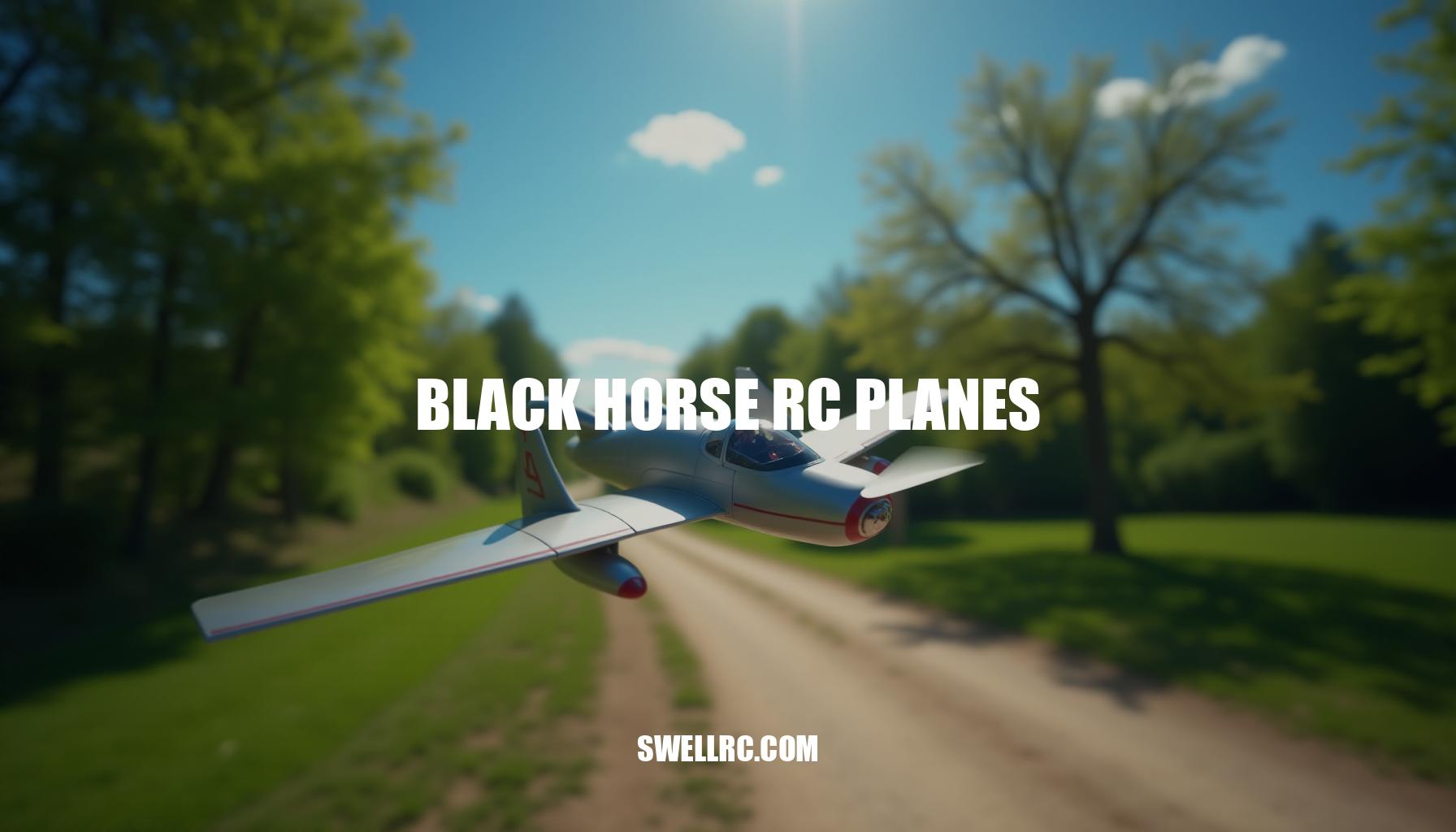Black Horse RC Planes Review: Expert Insights
The first time I unboxed a Black Horse Models RC airplane, I caught that unmistakable scent of fresh covering and neatly cut balsa, signaling I was in for something special. From the maiden taxi to the first gentle rotation, these scale RC planes felt dialed-in—showcasing purposeful engineering paired with real pilot-friendly manners. Black Horse Models has earned a respected reputation in model aviation for crafting radio-controlled aircraft that not only look right but fly right, a balance that keeps me coming back for more.
Their heritage truly shines through in the exquisite craftsmanship and the way each airframe balances durability with elegance. In the sections ahead, I’ll share insights on how these aerobatic RC planes build, perform in the sky, and stack up against other favorites in my hangar, including classic stalwarts like World Models and the refined selections I’ve explored via Esprit RC.
The Build and Design Philosophy of Black Horse Models
Black Horse’s design DNA is unmistakably “builder-friendly yet performance-first.” Their ARF kits arrive with precise laser-cut structures, clean hardware packs, and a finish that rewards a close look—panel lines, decals, and paint that carry scale realism to the flight line. Here’s why their construction wins me over:
- Smart materials: balsa wood RC planes form the main structure with lite-ply, complemented by fiberglass cowls and wheel pants for composite RC aircraft durability where it counts.
- Engineering precision: interlocking formers and ribs align true, minimizing build-induced trim issues through precision engineering.
- Covering quality: tight, wrinkle-resistant film that shrugs off heat cycles and makes field repairs straightforward.
- Hardware sanity: pushrods, control horns, and linkages that don’t need “day one” replacement.
- ARF done right: time-saving pre-hinged surfaces and accurate pre-drilling, yet still plenty of room to customize power systems and radio layouts.
In the broader balsa/composite arena, Black Horse sits comfortably among wood-ARF peers like Nexa, while differing from ultra-light, 3D-centric designs such as Skywing. At the far end of the spectrum, premium, all-composite giants from CARF command higher budgets and offer competition-grade rigidity and finish.
Black Horse lands in that sweet spot where craftsmanship, availability, and approachable build time intersect for most club pilots, particularly enthusiasts of RC warbirds and scale realism.
Real Flight Performance and Handling Experience
On the flight line, Black Horse models exemplify flight performance and handling that feel predictable in the best possible way. My typical maiden routine involves just a couple of clicks of trim after the first pass, followed by a settling sensation that the airplane wants to track straight and true. High-wing RC trainers cruise with a steady, hands-off stability that’s perfect for polishing takeoffs and circuits.
Dropping a notch of flaps slows them to a walking pace without threatening to tip-stall, giving pilots confidence to refine basic skills.
In contrast, low-wing sport RC planes add the welcome “grin factor” with snappy rolls, big round loops, and smooth four-point aerobatics. Meanwhile, RC warbirds bring a satisfying thrum and presence that make every downwind-to-base turn feel cinematic and immersive. These different airframes offer varied experiences, yet all maintain the signature Black Horse balance of power and control.
Compared with EDF jets like Freewing models, a wood-and-film Black Horse airframe offers a different kind of satisfaction: tangible inertia, a classic airfoil bite, and power setups that reward refined throttle management. For value-focused pilots, the extensive gear and accessibility around HobbyKing RC airplanes can quickly get you flying, with Black Horse models representing a natural graduation for those seeking deeper scale realism and authentic wood-airframe feel.
When durability is paramount—such as flying from rougher fields or installing heavier powerplants—proven high-end options akin to those found in Aircraft International RC are ideal. But for everyday club flying, Black Horse’s balance of strength, weight, and courteous manners is spot on. The bottom line in the air is clear: these models are responsive without being skittish, stable without ever feeling dull, and consistently engaging to fly.
Price, Value, and Where They Fit in the RC Market
Black Horse positions itself as a value-rich, craft-focused brand that balances price vs value effectively, offering more refined options than typical entry-level foamies while remaining far more affordable than boutique composites. Their lineup caters to a variety of enthusiasts looking for optimal cost-performance in hobby aircraft, whether you’re interested in electric RC planes or gas-powered RC planes. Here’s how their tiers break down:
- Entry range: Approachable high-wing trainers and smaller sport models that provide a genuine wood-airframe feel.
These models feature forgiving flight envelopes and minimal setup hassle, ideal for newcomers seeking reliable performance.
- Mid range: Scale warbirds and sport aircraft equipped with flaps and optional retractable gear. These are designed for pilots who value intricate details, scale authenticity, and that distinct “I came to the field to fly scale” energy.
- High range: Larger wingspan models and gas-ready airframes offering impressive flight authority without the leap to exotic composite materials, perfect for those aiming to step into serious scale RC planes and robust flying experiences.
When compared with legacy premium ARFs such as Aeroworks, Black Horse maintains competitive structure and finish quality while generally providing friendlier pricing, enhancing the overall cost-performance ratio. For enthusiasts captivated by ambitious multi-engine or jumbo-scale projects—like the notable Boeing 747 RC plane—Black Horse paves a more accessible path into owning and flying large, satisfying airframes that are practical to transport and assemble regularly.
Choosing the Right Black Horse RC Plane for Your Skill Level
Matching a model to your experience and field saves time, money, and foam-safe CA. For beginners, the best Black Horse RC plane for beginners typically includes a high-wing trainer with tricycle gear and generous wing area. These models offer docile stall behavior, sturdy landing gear, and easy battery or fuel access, making them perfect for those new to the hobby.
Keeping wingspans moderate ensures stress-free transport and assembly, while high-contrast schemes improve visibility during flight.
Intermediate pilots should consider a low-wing sport or mild scale model equipped with flaps. This choice helps sharpen energy management and pattern precision, keeping landings friendly as skills improve. While retractable landing gear can be enticing, it’s best to start with fixed gear to reduce complexity during this phase of your RC plane setup and flight training.
Advanced flyers can step into larger warbirds, 30–60cc aerobats, or detailed multi-surface scale subjects featuring retracts and flaps. At this level, fine-tuning CG (center of gravity), control throws, and expo settings to match your flying style becomes crucial. Reinforcing high-stress points and carefully planning power to suit your runway length ensure durability and performance.
Here are some quick assembly tips and insights I’ve learned the hard way to improve your ARF assembly and radio setup:
- Confirm incidence and thrust angles carefully; think of “ARF” as “assemble right, first”.
- Start with conservative control throws and apply 25–35% expo, then gradually tune upward as you gain confidence.
- Always maiden your plane on a calm day with a trusted spotter; complete initial trimming, practice safe landings, re-check settings, and then progressively open the flight envelope.
For breadth of ideas and cross-brand comparisons, I keep SwellRC bookmarked as a helpful research hub while scoping out the next airframe to add to the fleet. Whether you’re focused on beginner-friendly models or planning advanced maneuvers, this resource supports every step of effective flight training and model selection.
Conclusion: My Take on the Legacy and Future of Black Horse RC Planes
After years of tinkering, trimming, and test-flying, Black Horse continues to earn space in my trailer because they strike the balance I crave: honest craftsmanship, predictable handling, and scale realism that never feels fussy. The wood-airframe feedback through the sticks is something I keep chasing—steady in the pattern, expressive when I want to play, and rugged enough for real-world club fields.
Whether you come from foam EDFs, balsa sport ships, or composite giants, there’s a Black Horse model that fits your flying rhythm and workshop time. Explore, compare, and keep learning—across brands and styles—and you’ll find the airframe that makes you look forward to the next perfect weather window.
For enthusiasts passionate about model aviation and the RC hobby, reliability and flight satisfaction are paramount.
Black Horse delivers on both with models that blend durability and performance seamlessly.
- Reliability: Robust construction ensures dependable flights at every outing.
- Craftsmanship: High-quality materials and attention to detail enhance the building experience.
- Scale Realism: Authentic designs that impress both pilots and spectators alike.
For me, Black Horse remains a top pick when I want a build that feels like a craft and a flight that feels like a reward.
Frequently Asked Questions
- Who manufactures Black Horse RC planes?
Black Horse RC planes are manufactured by Black Horse Models, with production based in Vietnam and distribution handled by regional partners (for example, Ripmax in parts of Europe). - Are Black Horse RC planes good for beginners?
Yes—choose a high-wing trainer with tricycle gear. Black Horse ARFs are forgiving, stable, and well-finished, though you’ll still need basic assembly skills, proper radio setup, and ideally a mentor for the maiden. - What materials are used in Black Horse RC models?
Primarily balsa and lite-ply structures with fiberglass parts (such as cowls and wheel pants), aluminum landing gear, occasional carbon reinforcement, and heat-shrink covering film. - How do Black Horse planes compare with Freewing or Nexa models?
Black Horse and Nexa both focus on balsa/lite-ply ARFs with scale presence. Freewing centers on foam EDF jets—fast to assemble with jet-like performance. Choose Black Horse for wood-airframe feel and scale fidelity, Freewing for EDF speed and convenience, and Nexa as a similar balsa ARF alternative. - Where can I buy authentic Black Horse RC planes online?
From reputable hobby retailers and specialist RC stores. Reference hubs like SwellRC help you compare brands and options; always verify stock, return policies, and parts support before purchasing. - What are the top-rated Black Horse RC planes?
Favorites vary by year and region, but popular picks include 60-size trainers, 1.20-size warbirds with flaps and retracts, and 30–60cc aerobats. Check recent club feedback and retailer reviews for the latest standouts. - Do Black Horse RC planes come pre-assembled or as kits?
Most are ARF (almost-ready-to-fly): major structures are built and covered, but you install radio gear, power system, and hardware. They are not typically sold as fully RTF (ready-to-fly) packages.



